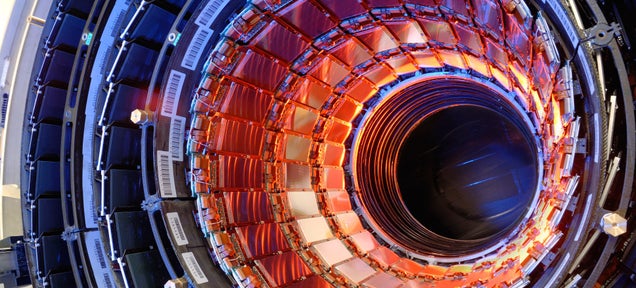The LHC Has Found a New Particle Unlike Any Other Form of Matter
 SEXPAND
SEXPAND
Not content with perhaps the biggest scientific discovery of the decade, scientists at the Large Hadron Collide continue to search for new particles—and now they've found one that seems to be an entirely new form of matter.
A series of experiments at the LHC have confirmed that a new particle called Z(4430)—catchy!— actually exists, and it's the best evidence to date of a new form of matter called a tetraquark. Quarks are the subatomic particles that, combined, form all matter. In pairs they form mesons; in triplets, protons and neutrons. Tetraquarks are a hypothesized combination of four of the little things—and Z(4430) was, if it existed, thought to be an example. Thing was, nobody knew for sure—until now—that it existed or not.
Its sighting at the LHC changes things. Researchers from CERN have found as many as 4000 of the particles, which means that those who think tetraquarks do exist are pretty excited. There remains some work to be done to understand once and for all if Z(4430) is with 100 percent certainty a tetraquark, and even then exactly what that means for us. But in the meantime, it's nice to know that the LHC isn't resting on its laurels. [arXiv via New Scientist]

No comments:
Post a Comment